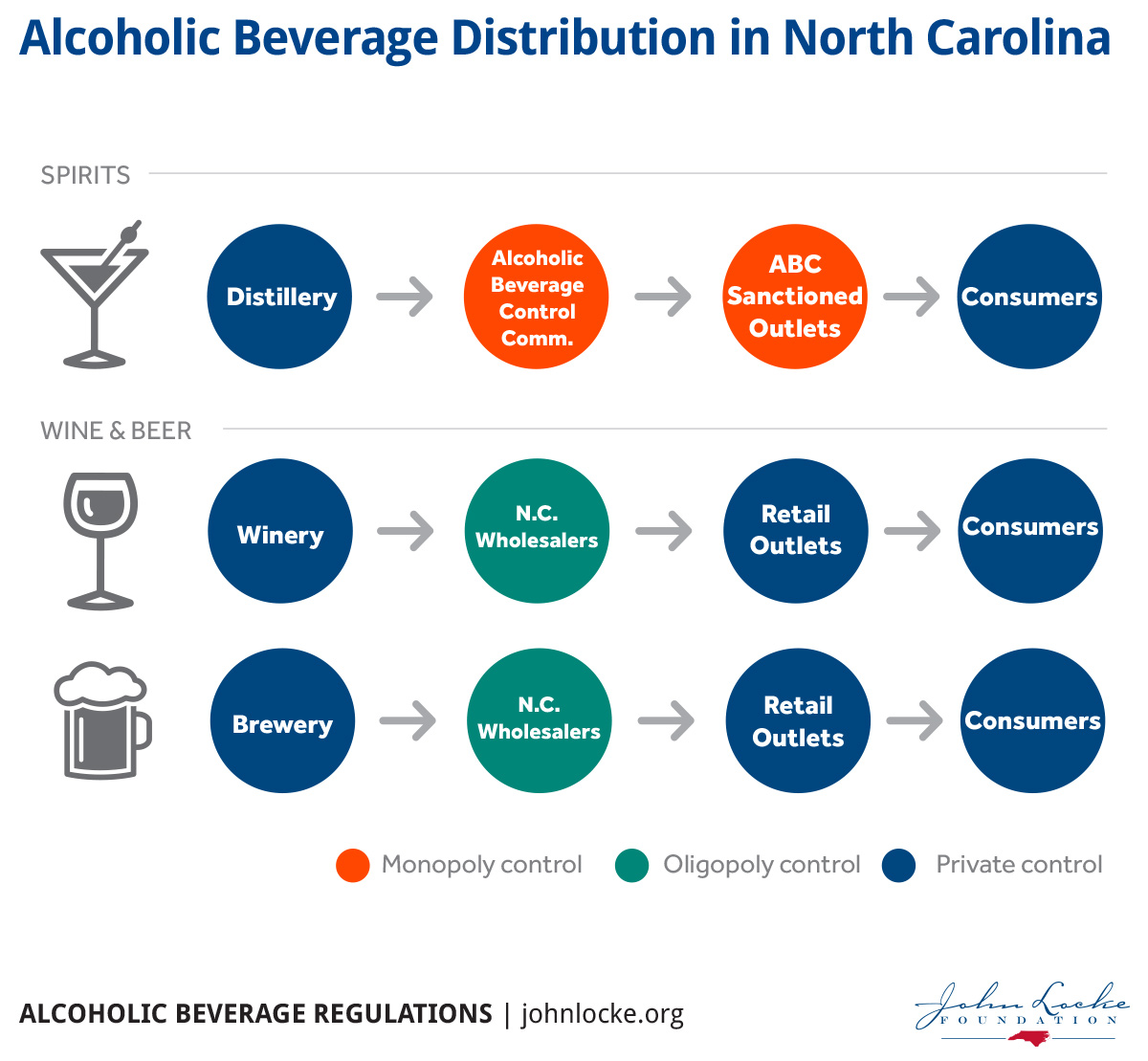In the John Locke Foundation’s Policy Position on Red Tape and Regulatory Reform, I write about how “More lightly regulated industries grow much faster and produce at much greater rates than more regulated industries.”
Here’s an interesting example of this process at work in North Carolina history.
At the beginning of the 20th century, North Carolina was the nation’s leader in wine production and the nation’s leader in legal distilleries (with 745 registered distilleries, 540 that were operating). These legal industries were killed off by statewide prohibition in 1908.
Prohibition lifted (federal and state), the ABC system exerted tight control over liquor. State government controlled wholesale distribution, and local governments controlled retail sales. (Even for a control state, that’s weird.)
Eventually, state law allowed distilleries to return in 1979.
They didn’t.
North Carolina didn’t see its first new distillery until 2005. Now there are 57 local distilleries in North Carolina.
In the meantime, wine (which had been placed under the purview of the ABC system in the late 1950s) was regulated under a relatively freer system. My colleague Jon Guze’s report describes many problems with the state’s three-tiered distribution system, but even with its flaws, it’s not nearly as restrictive as how North Carolina regulates liquor.

So wineries began coming back to North Carolina about when Prohibition ended, albeit very slowly at first. Faster growth was seen after reductions in state winery license fees and wine taxes were passed in 1972.
By 2000, there were already 21 established local wineries. Now there are 168 local wineries in North Carolina.
(Also, for those interested, local craft breweries went from 30 in the early 2000s to 304 now — the most in the South.)


